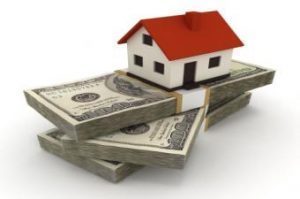 How overvalued and undervalued are some of the biggest markets in the U.S.? The CoreLogic Home Price Index (HPI) Forecast Validation Report, which compares the increase in the HPI Forecast with the actual HPI results over a 12-month period, indicates that more than a decade of steady growth, volatility has entered the market, reflected in a slightly larger variation between the two HPI indicators.
How overvalued and undervalued are some of the biggest markets in the U.S.? The CoreLogic Home Price Index (HPI) Forecast Validation Report, which compares the increase in the HPI Forecast with the actual HPI results over a 12-month period, indicates that more than a decade of steady growth, volatility has entered the market, reflected in a slightly larger variation between the two HPI indicators.
According to the results, with a forecasting gap of 13% above actual home prices, San Jose is one of the most volatile cities in the study. Despite the volatility, San Jose is considered “Normal” by CoreLogic’s market condition indicators, for a majority of the past four years.
Nationally, the HPI forecast predicted a national change of 5.7% compared to a 3.3% actual results, a variance of 2.4%.
“Long term affordability concerns coupled with consumer sentiment about the general economic climate along with other economic factors caused actual home prices to increase at a slower rate,” CoreLogic states. “This change was particularly noticeable during the spring, when the rate of home purchases tends to be higher.”
CoreLogic also examined the most overvalued and undervalued metro areas. Some of the most overvalued metro areas include Miami, Austin-Round Rock, and Cape Coral-Fort Myers at 75%, 66%, and 52% overvalued, respectively. Undervalued markets include Bridgeport-Stamford-Norwalk, Hartford-West Hartford-East Hartford, and New Haven-Milford, at 37%, 34%, and 30% undervalued, respectively.
Some of the most accurately forecasted metroes, with a less than 1% difference, were Phoenix-Mesa-Scottsdale, Arizona; Houston-The Woodlands-Sugarland, Texas; Milwaukee-Waukesha-West Allis, Wisconsin; Charlotte-Concord-Gastonia, North and South Carolina; and Atlanta-Sandy Springs-Roswell, Georgia. CoreLogic notes that three major metros in Texas made the top 10 most accurately forecasted metroes, however, some Texas metroes have also experienced significant slowdowns in appreciation. Austin-Round Rock, Dallas-Plano-Irving, and San Antonio all had appreciation rates of between 1% and 3% during the 12-month period, among the slowest 25 metroes.

 theMReport.com Your trusted source for mortgage banking news
theMReport.com Your trusted source for mortgage banking news









